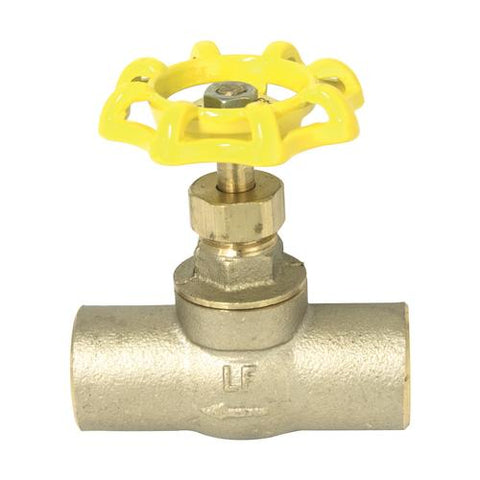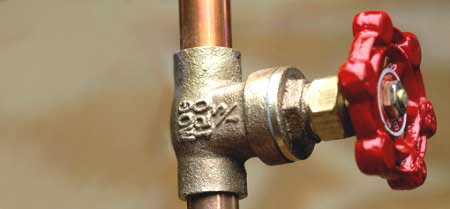We have noticed this great article relating to 3 Simple Strategies to Prevent Damage from Showers and Storms below on the web and concluded it made perfect sense to share it with you in this article.

The plumbing system of your house is a detailed network of pipes as well as shut-off shutoffs. The latter is used to regulate the water's circulation right into the pipes throughout the whole residence. In case of an emergency, you can cut the water making use of the valves. This prevents comprehensive water damages from taking place.
Why Must I Stress over This?
Besides, professional servicemen will certainly shut off these shutoffs when there are repairs in regional lines. Your restroom sink is damaged, so you can readily find the shut-off valve underneath the sink. However, for major leaks, you need to shut the mainline shut-off shutoff. It is also good practice to turn this off if you will be away for vacation.
The longer you wait to shut the shut-off valve, the much more comprehensive the damage will be. You may not have adequate time to figure out how to shut the shutoffs when you're stressing amidst an emergency.
What Does the Shut-Off Valve Appear Like?
This is normally a handle that allows you to switch off the water for a specific appliance, a localized location (for example the whole 2nd flooring), or for the whole residential or commercial property. It is important to understand where these valves are, so when something appear in any location of your house, you can close it immediately. This will certainly assist you avoid substantial water damage that will set you back thousands to repair.
Where are These Situated?
Your ideal bet is to call a water restoration solutions business for assistance. If you have a fairly moderate-sized house, attempt looking for a handle or bar.
Generally, home builders set up the valves near or within the main, ground-floor washrooms. The shutoffs are meant to be visible, some select to camouflage them for visual factors.
When to Call a Specialist?
Should the previously mentioned be the case for your localized shutoffs, you have no other choice but to turn off the primary water line, reducing the resource of water in your whole residence. Then call the plumber to evaluate the issue and turned off the shutoff in that location only so you can utilize the remainder of the plumbing in other areas of your house.
Remember, these valves are lifesavers and also important for any plumbing repair work. If you find any leakages to avoid additional damages, you can turn them off. Your house can get swamped not just via all-natural calamities however due to a burst pipeline. In the event of a plumbing emergency, closed down these shutoffs to prevent problems that call a credible water damages restoration supplier.
The plumbing system of your house is an intricate network of pipelines as well as shut-off shutoffs. In the occasion of an emergency, you can reduce the water making use of the shutoffs. The longer you wait to shut the shut-off shutoff, the extra extensive the damage will certainly be. It is essential to know where these shutoffs are, so when something plants up in any kind of location of your house, you can close it right away. In the occasion of a plumbing emergency, closed down these valves to avoid problems that call a trusted water damage reconstruction supplier.
How to Shut Off Water Valves
The Shutoff Valve to the Water Supply for an Individual Plumbing Fixture
To stop the flow of water to a specific appliance such as a sink, check the pipes for the nearest valve; it will likely be made of chrome and located directly below the fixture. Many showers and sinks have two valves for hot and cold water respectively, so make sure to turn them both off. Appliances like dishwashers, How to Shut Off Water Valveswashing machines, and refrigerators sometimes have switches, rather than valves, on the hoses connecting them to the wall. Water heater valves are usually located on the pipes above.
When it comes to which way you should turn the valve, keep in mind the old saying “righty tighty, lefty loosey.” In other words, turning a valve clockwise, or to the right, will restrict the flow of water while turning it counterclockwise, or to the left, will allow water to flow. If you have trouble turning the valve, wear a work glove to get a better grip, or use a wrench. Once you turn all of the valves clockwise as far as they will go, the water supply should be successfully shut off.
Before you start making repairs, have a bucket nearby so that you can drain any water that was left over in the pipes. After you finish the job, turn the valves counterclockwise as far as they will go to restore the water flow.
The Shutoff Valve for the Main Water Supply to Your Home
The first step is locating your main shutoff valve. You probably have a brass valve with a round handle near the area where water enters your home. It could be located in your kitchen, a utility closet, a downstairs bathroom, or even on an outside wall. Turning the valve clockwise as far as it can go should shut off all of the water fixtures in your home; however, you’ll need to turn on all faucets to empty any water left remaining in the pipes. Let your sinks and showers run until all water flow ceases, and then turn all faucets to the off position. After finishing your repairs or installations, turn the main valve back counterclockwise.
The Shutoff Valve for the Water Supply to Your Entire Property
Before you do anything, call your water company and ask for permission to access your street shutoff valve. If your home’s main water valve fails or needs replacing, you must turn off the water supply to your whole property before attempting repairs. You’d also need to do this before trying to fix a leak in the pipes connecting your home to the street valve. The shutoff valve for the property is usually located in the same metal box that contains the water meter. Remove the box cover and look for a handle; you might need a long wrench to reach it.
Different cities have different types of street valves. Ball valves have long, thin handles while gate valves have more rounded handles. A ball valve handle will usually be aligned with the pipe while open; turn it 90 degrees to the right to turn it off. Gate valve handles should be turned clockwise as far as possible to stop the water flow.

I ran across that entry on 3 Shower and Storm-Proof Steps For Your Home when doing a lookup on the internet. Sharing is good. Helping people is fun. Thank-you for your time invested reading it.
Book Your Appointment